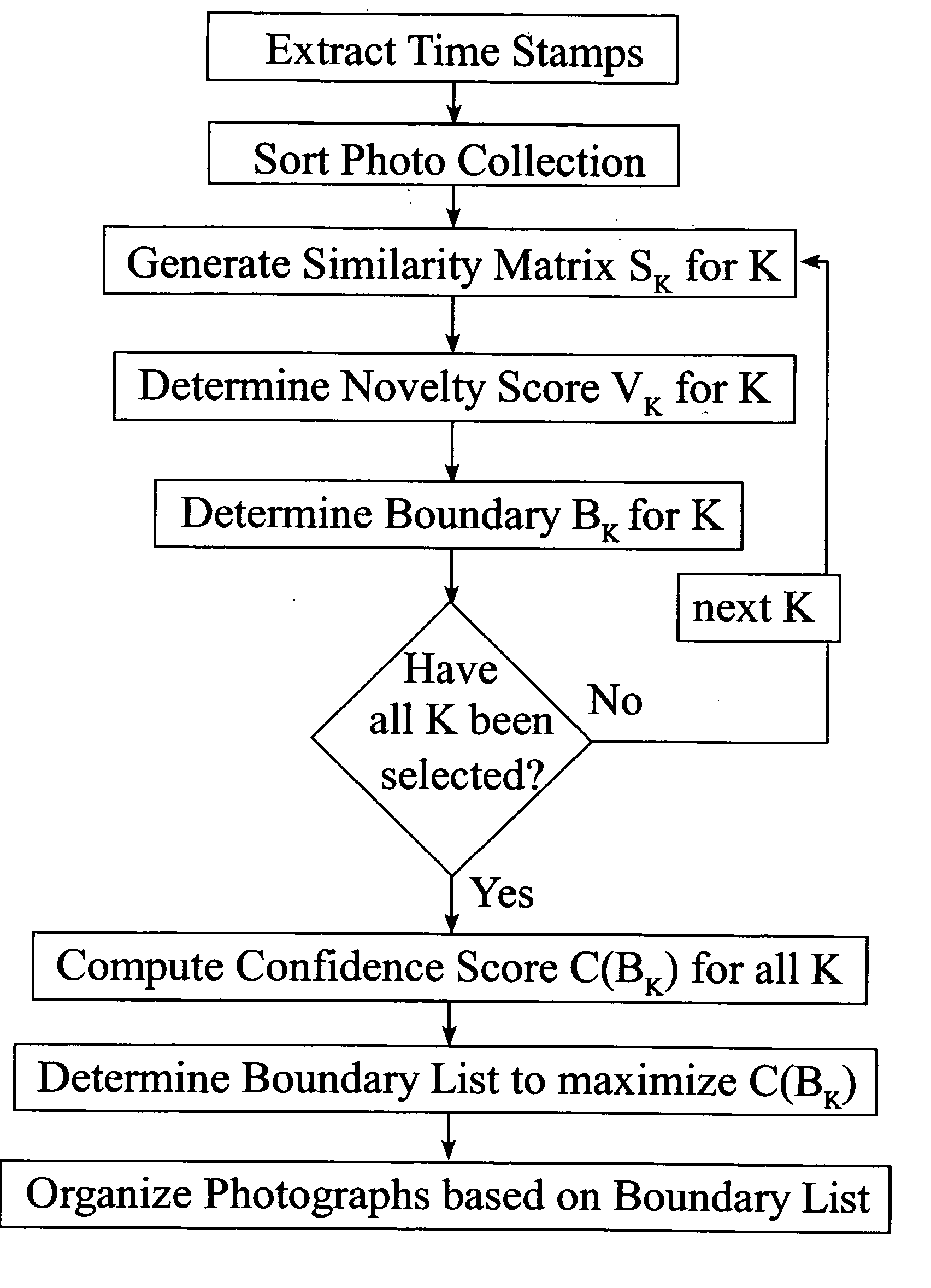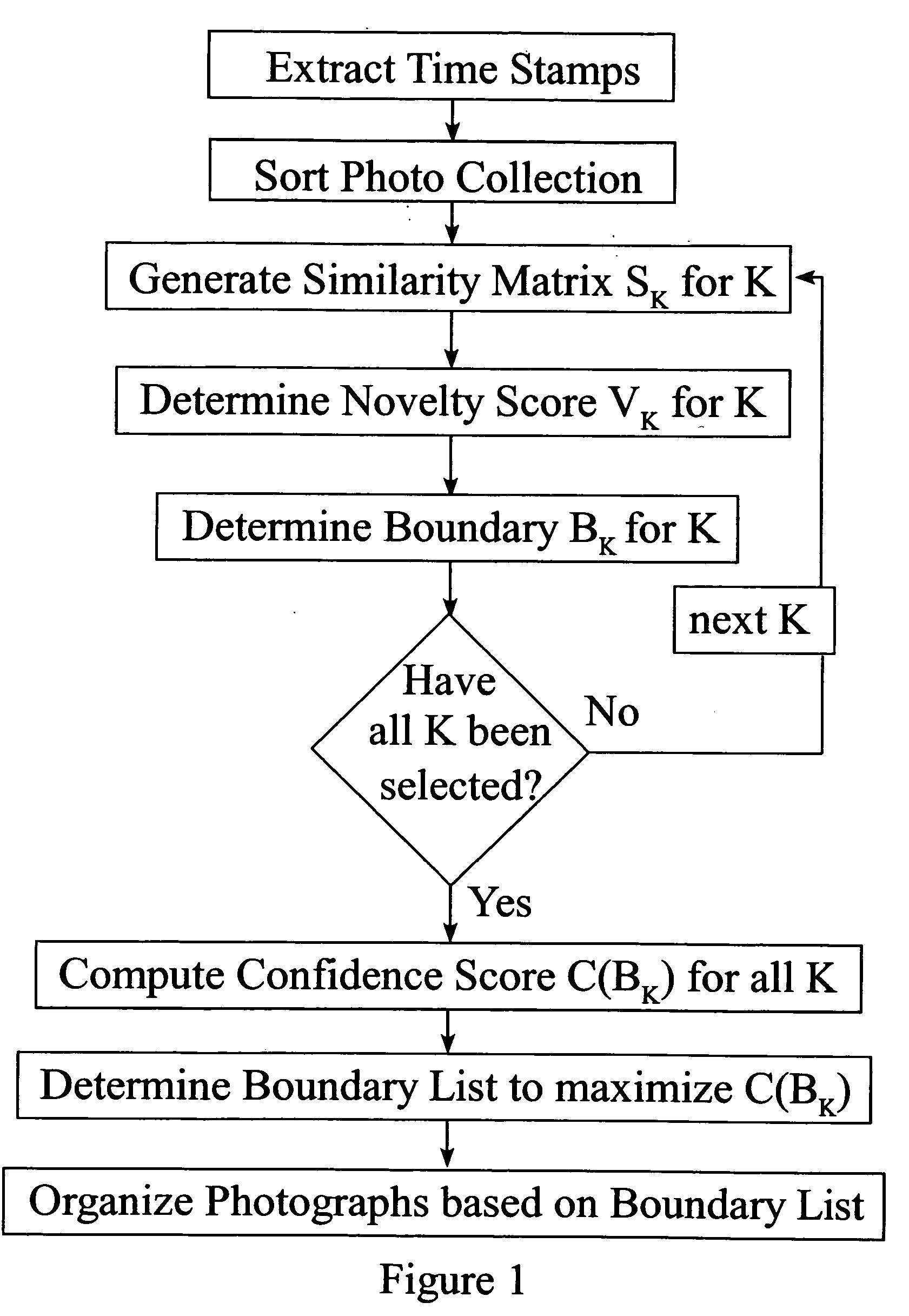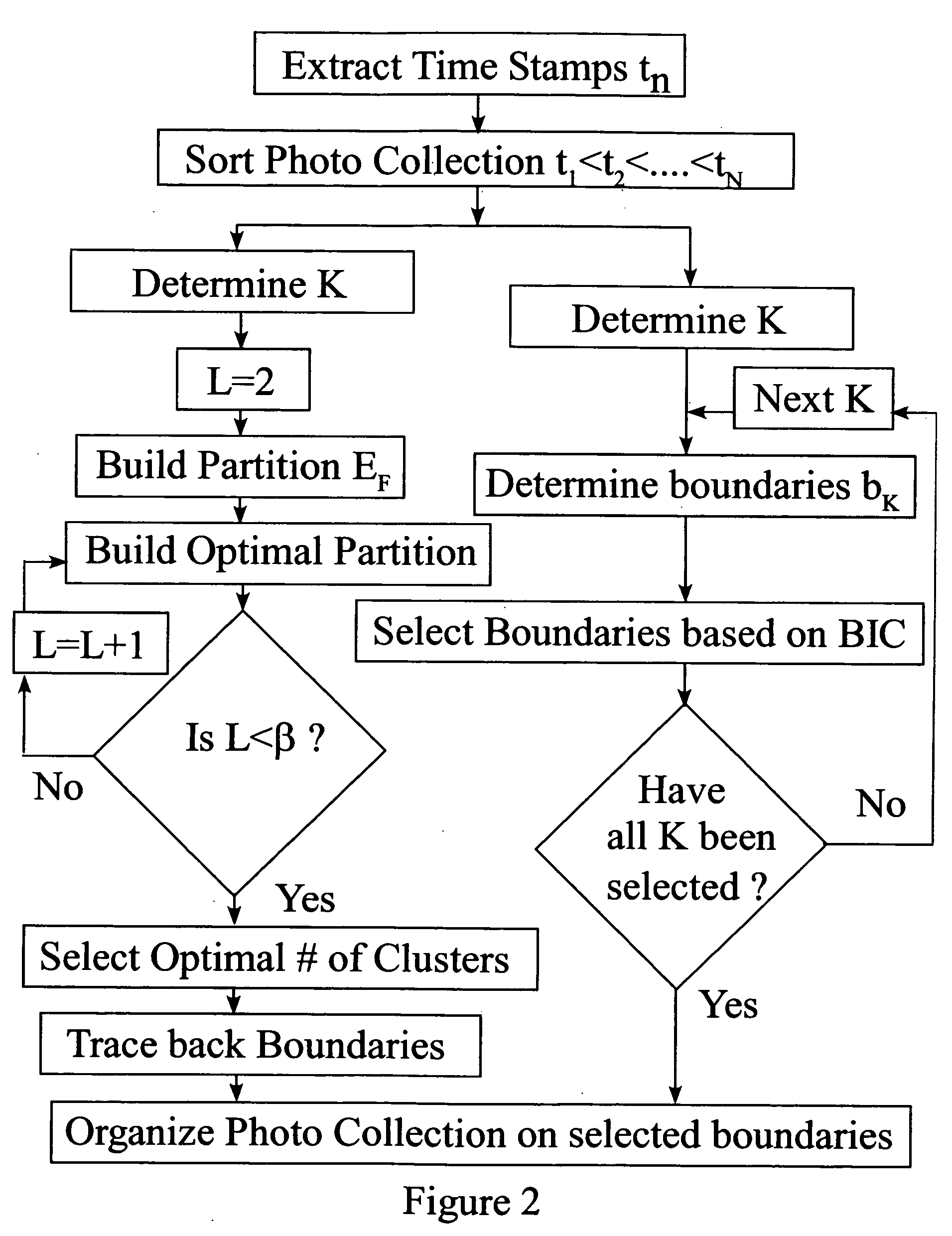Efficient methods for temporal event clustering of digital photographs
a technology of temporal event and digital photographs, applied in the field of methods for clustering digital photograph collections, can solve the problems of limiting the suitability of these methods for interactive applications, quadratic computational complexity of photographs, etc., and achieves the effects of reducing computational complexity, rapid and efficient organization, and accelerating the computational step
- Summary
- Abstract
- Description
- Claims
- Application Information
AI Technical Summary
Benefits of technology
Problems solved by technology
Method used
Image
Examples
Embodiment Construction
[0021] As outlined in FIG. 1, temporal event clustering techniques can be based on similarity analysis. This invention discloses accelerated methods for temporal event clustering of digital photographic collections. FIG. 2 shows schematically embodiments for introducing DP or BIC methods to reduce computational complexity of temporal clustering.
[0022] In one embodiment of the invention, similarity analysis of a collection of digital photographs can be used to determine initial boundaries. In similarity analysis a collection of digital photographs can be represented by a matrix of scale parameter K. FIG. 3 illustrates a process of embedding a digital photograph similarity measure (see equation (1)) based on a time stamp in a similarity matrix SK(i,j). SK(i,j)=exp (-ti-tjK)equation (1)
In SK(i,j), ‘i’ identifies rows of a matrix and ‘j’ identifies columns of a matrix corresponding to entries comparing the ‘i’th photograph scalar timestamp with the ‘j’th photograph scalar time...
PUM
 Login to View More
Login to View More Abstract
Description
Claims
Application Information
 Login to View More
Login to View More - R&D
- Intellectual Property
- Life Sciences
- Materials
- Tech Scout
- Unparalleled Data Quality
- Higher Quality Content
- 60% Fewer Hallucinations
Browse by: Latest US Patents, China's latest patents, Technical Efficacy Thesaurus, Application Domain, Technology Topic, Popular Technical Reports.
© 2025 PatSnap. All rights reserved.Legal|Privacy policy|Modern Slavery Act Transparency Statement|Sitemap|About US| Contact US: help@patsnap.com



